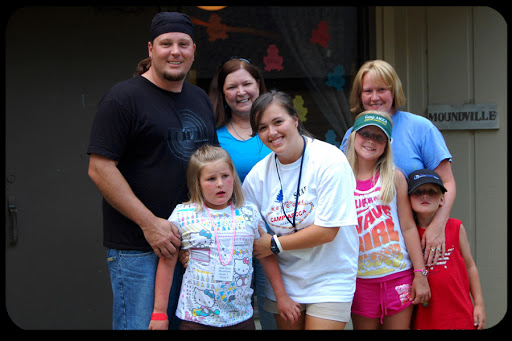In 1990, one of my colleagues at Crossroad/Continuum—Evander Lomke—spoke glowingly of his 3-year-old daughter. She was even beginning to read! She was the apple of her parents’ eyes, and more.
Months later I spoke with a different Evander, one whose voice I hardly recognized: a tone filled with sharp sadness, and a suffering I couldn’t imagine, even after I had been working for decades with some of the most difficult situations in child clinical psychology.
His little girl had experienced a seizure, one so devastating that she had lost the promise of her already superior intelligence. She now displayed profound mental retardation. Lennox-Gastaut had arrived.
I had never heard of this form of epilepsy, and neither had many neurologists.
Recently Evander read a blog in the New Yorker, written by a father whose life had also been re-arranged by a different rare disorder. This blog garnered interest and led to some increased funding and medical awareness.
"Why not start to blog and write more about Lennox-Gastaut?" Evander reasoned.
Evander hopes that some of you who read this article, may find a way to lend your hand to the 50,000 people around the world whose lives, and those of their families, have changed, forever.
What is Lennox-Gastaut (LGS) syndrome?
LGS was identified in 1962 by the two doctors after which it is named. The syndrome is defined by a specific EEG pattern of spike and wave. The syndrome typically involves drop seizures, “petit mal” that are difficult to detect except through changes in behavior, and mental deterioration. In many cases, the cause or causes remain unknown, though a genetic component is increasingly suspected in many individuals.
How is LGS different from other seizure disorders?
A child with LGS, which typically manifests between the ages of 3 and 6, is often unmanageable with standard anticonvulsants, of which there must be thirty or more now, as primary drugs and so-called add-ons. The individual can be in a virtual epileptic state (“status epilepticus”), which of course is a dangerous state of being. The standard response that epilepsy does not equate with mental retardation is proved untrue with LGS.
Is there a psychiatric or behavioral dimension to the syndrome?
There can be, especially if the temporal lobes are involved. Especially in young children, the so-called focal point of the seizures can be too deep in the brain to be detected or treated by surgery. Fear, inappropriate laughter, crying, unexpected screaming are all possible, and can be confused with emotional and psychiatric problems.
How does a parent cope with a child receiving such a diagnosis?
There is no way to prepare anyone for such a syndrome. LGS, which is said to affect 50,000 individuals, manifests a range of behaviors and effects. Although the condition produces understandable stress, it is best to try to create a calm environment with as little stimulation as possible—often a difficult goal in households with several children.
The parent or caregiver may be asked to take part in trials involving medications not yet FDA-approved or in a special regimen of food intake called the ketogenic diet. Such a diet is difficult to maintain: building ketones in the body by burning off fat. Other trials involve giving a steroid by injection (ACTH), or even mega-doses and infusions of gamma globulin. But the main thing is to be patient and to not raise expectations.
What are the long-term effects?
For older individuals, this is largely unknown. LGS is a progressive condition, which means brain damage is ongoing. Only a doctor could answer this question responsibly, and typically, in most situations, would not be able to give an honest answer. It is best to be followed at a world-class epilepsy center such as
New York University (NYU) or Johns Hopkins.
What are some of the new treatments and medications being developed?
There is much cause for hope. Over the past twenty-five years many anticonvulsants and add-ons have been developed and more are in the works. LGS, being so rare and largely non-fatal in itself, is "an orphan disease." There is too little research being done. France leads the world in such research and the USA is eons behind. Medications are available in France, Germany and Japan that are not FDA-approved. (Approach these with caution, however, as a bad reaction requiring a visit to the ER will lead to bafflement at the ER.) Much genetic research is being done and a recent mutant gene was identified in 25 LGS cases out of 100. Whether certain strains of cannabis are helpful, such as Charlotte’s Web, remain open to question but are being studied at more than one facility. Often, as the youngster matures, a focal point or several can be located, and surgery becomes an option. More radical forms of surgery, for example involving a cut to the corpus callosum, which ties the hemispheres of the brain together, have been performed for decades.
Sadly, the stress from horrendous medical situations like LGS can contribute to divorce, but for some, like the Lomkes, marriage can be strengthened.
If even just one person reading this can do something to help people and families where Lennox Gastaut is present, these words will have been worthwhile. You might get some ideas here.
is professor of psychology at Marist College and director of research and development/grants at American Mental Health Foundation in New York City. He studied theology and scripture at DePaul University.

